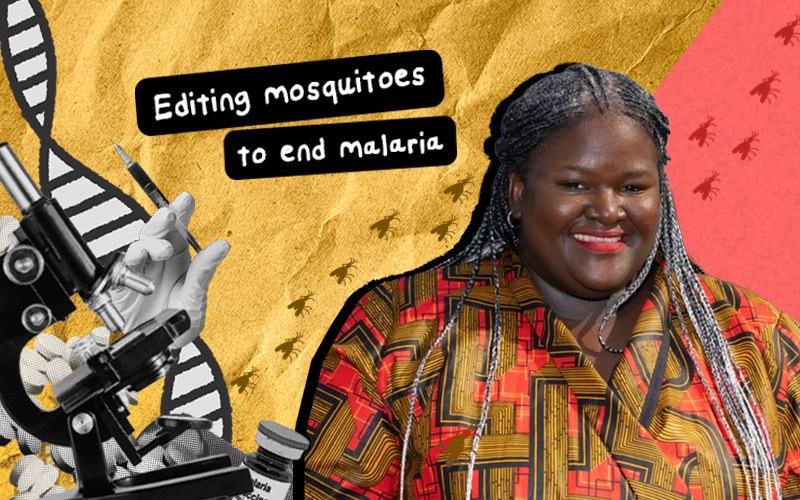It will take decades to clear Ukraine's landmines. Without more women, it will be even slower — and more dangerous.
By
There’s a rule of thumb in landmine removal: every day of fighting means another month of demining. That’s according to James Cowan at the HALO Trust, one of the world’s largest demining organizations. After almost 10 years of war and more than 500 days after Russia’s full-scale invasion, Ukraine is one of the most mine-laden countries in the world — and clearing Ukraine is expected to take decades.
In response to the full-scale Russian invasion in 2022, demining agencies in Ukraine have dramatically increased their recruiting and have made gender equity a higher priority. Demining teams are overwhelmingly male, but studies show that when women are included in the demining process, teams have fewer accidents, are just as productive, and can improve mine reconnaissance and community engagement.
Still, landmine and explosive ordinance removal organizations are struggling to recruit women, in part due to gendered expectations about who should be doing the dangerous manual work of mine clearance. Now, demining groups are adapting their recruiting strategies to encourage more women to apply.
They need those applications urgently. For example, HALO Trust, one of the largest demining NGOs, has been in Ukraine since 2016 and has cleared an estimated 10,000 mines, but CEO James Cowan estimates almost 2 million mines remain. Further, the destruction of the Kakhovka dam this spring caused floods that dislodged previously discovered mines and washed them ashore on riverbanks and beaches downstream from the dam.
Demining organizations are scaling up to meet these challenges, but the work is slow and the stakes are high. Twenty children have already been killed and almost 70 have been wounded in Ukraine due to mines or unexploded artillery shells, which kids sometimes mistake for toys. In addition, many developing countries depend on Ukrainian agriculture, but farmers can’t work in fields that are contaminated with mines and unexploded ordnance, including rockets, missiles, and grenades.
Who is demining Ukraine?
In 2019, before Russia’s full-scale invasion, demining in Ukraine was dominated by men. Women made up less than 15% of the workforce, according to survey data of 11 demining organizations Mines Action Canada shared with Blue Marble. At the time, women constituted the majority of the demining workforce only in Myanmar and Thailand.
Since the start of the full-scale invasion, several demining groups have announced plans to hire and train staff.
Blue Marble checked in with FSD, a Swiss demining organization, to understand how it is recruiting women for demining opportunities and why this work is important.
FSD operates over a dozen clearance teams in Ukraine and, at the time of writing, has a staff of 166, one-third of whom are women.
While women make up most of FSD’s in-country administrative staff in Ukraine, they are underrepresented in other positions. Women make up 37% of the risk education and non-technical survey team, which engages with the community and uses drones to find and identify land mines. Of the 77 staff members working on mine clearance teams, only 12 are women. That’s about 15% — the same percentage reported for Ukraine in the 2019 Mines Action Canada survey, across all demining groups that shared gender data. FSD says the current ratios could change since new teams are currently in training.
FSD demining crew enjoys a lunch break in the field. (credit: John Montgomery, FSD)
FSD recently announced, for instance, that 10 new teams will be hired in Kharkiv, Ukraine, to clear small farmers’ agricultural land. Program manager Eleanor Porritt recently arrived in Ukraine to help build and run the new teams, and she shared with Blue Marble some of the difficulties of recruiting women.
“Speaking to especially our older male deminers, if I ask them [if] they are proud of the work they do, they're like, ‘Absolutely’. If I ask if they’d recommend the work: ‘Absolutely,’” says Porritt. “If I ask them if they’d recommend their daughters do the work: ‘No, no, no, no, no.’”
“There are those kind of barriers which are just a bit ingrained, which take time to change,” she adds.
Women clear the main road of Shesovistya, a village Russians occupied for over a month. According to FSD, six ammunition trucks were destroyed on this road. The explosion threw ordnance across the town, damaging homes and contaminating fields and gardens with explosives. After clearing the sites, villagers have been able to begin reconstructing their homes before the coming winter. (credit: John Montgomery, FSD)
Why do Ukraine’s deminers need more women?
Breaking down these gender barriers is important for demining groups like FSD because how they staff their teams impacts how efficiently they find landmines and unexploded ordnance.
“It's really just … about being more approachable,” says Porritt.
She cites the example of an older woman who owns a small plot of land that she wants swept for mines. A large commercial farm would typically have the confidence to ask an NGO for assistance, but this hypothetical small landowner might not. Having women on the demining teams can help bridge the gap between an international aid group that is new to the community and a local individual who needs help.
As a survey team lead, Tatyana Parkhomenko is an FSD staffer who works with the kind of community members Porritt describes. Before the war, Parkhomenko was a pharmacist. She’s from Donetsk — parts of which have been occupied by Russia since 2014 — and was displaced to Kharkiv by the war.
Through a translator, she explained that her team is currently working in an area that was occupied until recently by the Russian military. She says that many women there are more willing to speak with FSD’s female staff than with men in similar positions. “[T]hey are willing to communicate with women from FSD because they still have some of that kind of fear from men because they have been under occupation,” she says. “Maybe maybe there was some traumatic experience or traumatic background [with men].”
Porritt, who has previously worked in Iraq, Sri Lanka, and Cambodia, plans to recruit more Ukrainian women for demining teams by showing examples of women like Parkhomenko doing the work.
Though Porritt has only recently arrived in Ukraine, she thinks that it's been tougher to recruit women for mine clearance because of gendered work expectations locally.
Those expectations, she explains, are “not in terms of maybe staying at home and working, because a lot of women work, but actually in terms of physical manual labor.” The job of clearing mines is a physical one — “probably seen as more physical than it actually is,” says Porritt — so convincing women that they can handle it is one of the barriers FSD faces.
FSD staff practice using metal detectors to find landmines buried in the mud outside of Chernihiv. (credit: John Montgomery, FSD)
“The most important thing we want to say”
The women on Porritt’s team now, including Parkhomenko and her fellow survey lead Anastasia Shtonda, say the same thing about their work that their older, male counterparts do.
“The most important thing we want to say is that we are proud,” says Shtonda. “We are really proud to be a part of this team.”
When asked if she was ever nervous working with mines, unexploded missiles, and other explosives, Anastasia said, “Yeah, we can be nervous, but we are not afraid.”
She explained that, at first, her family and friends had concerns for her safety. But after she explained all the safety protocols and training the Ukrainian government and FSD require, their attitudes started to change.
“They are really proud of us and they are telling everyone that we are working in demining,” she says.






